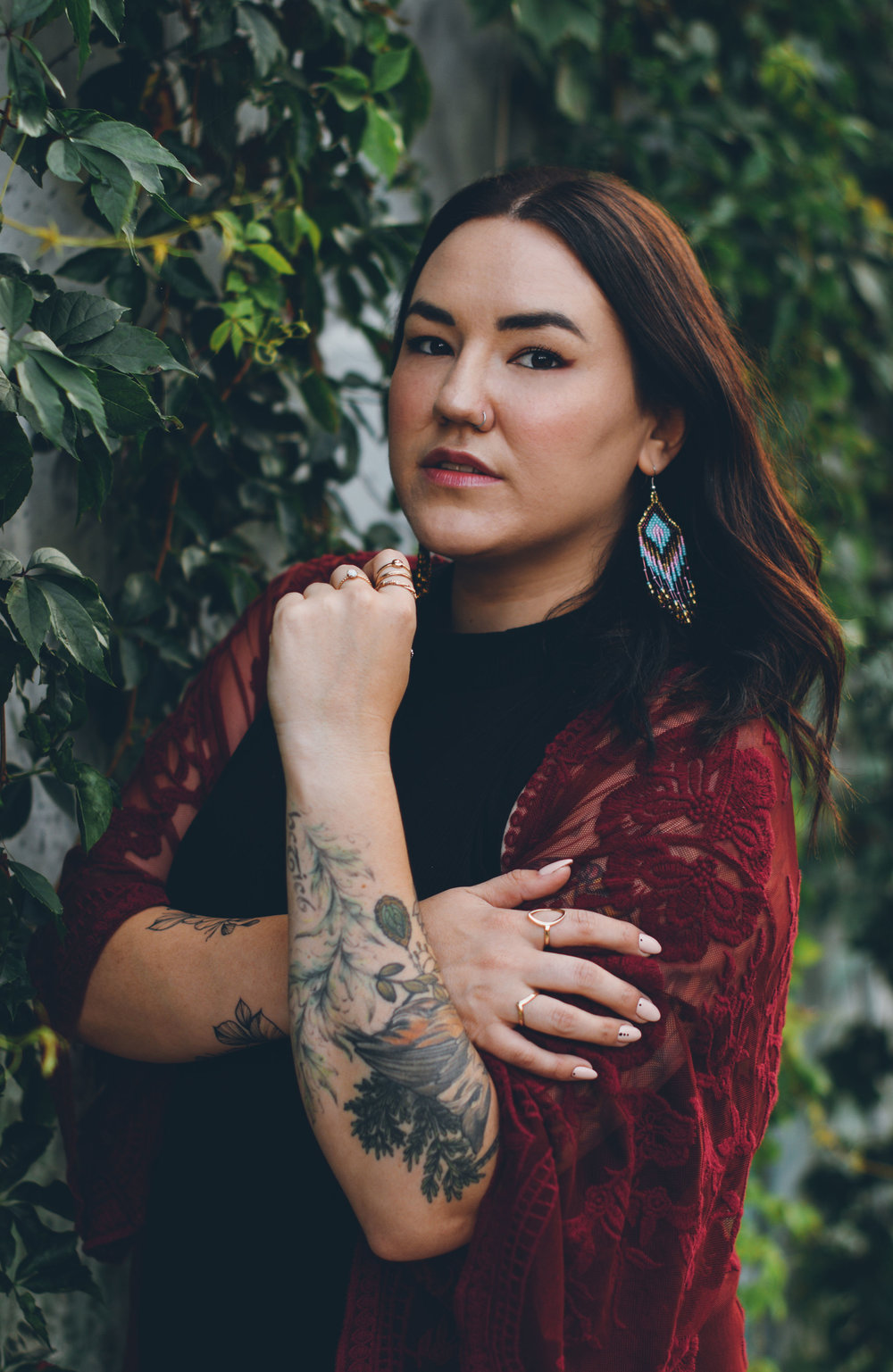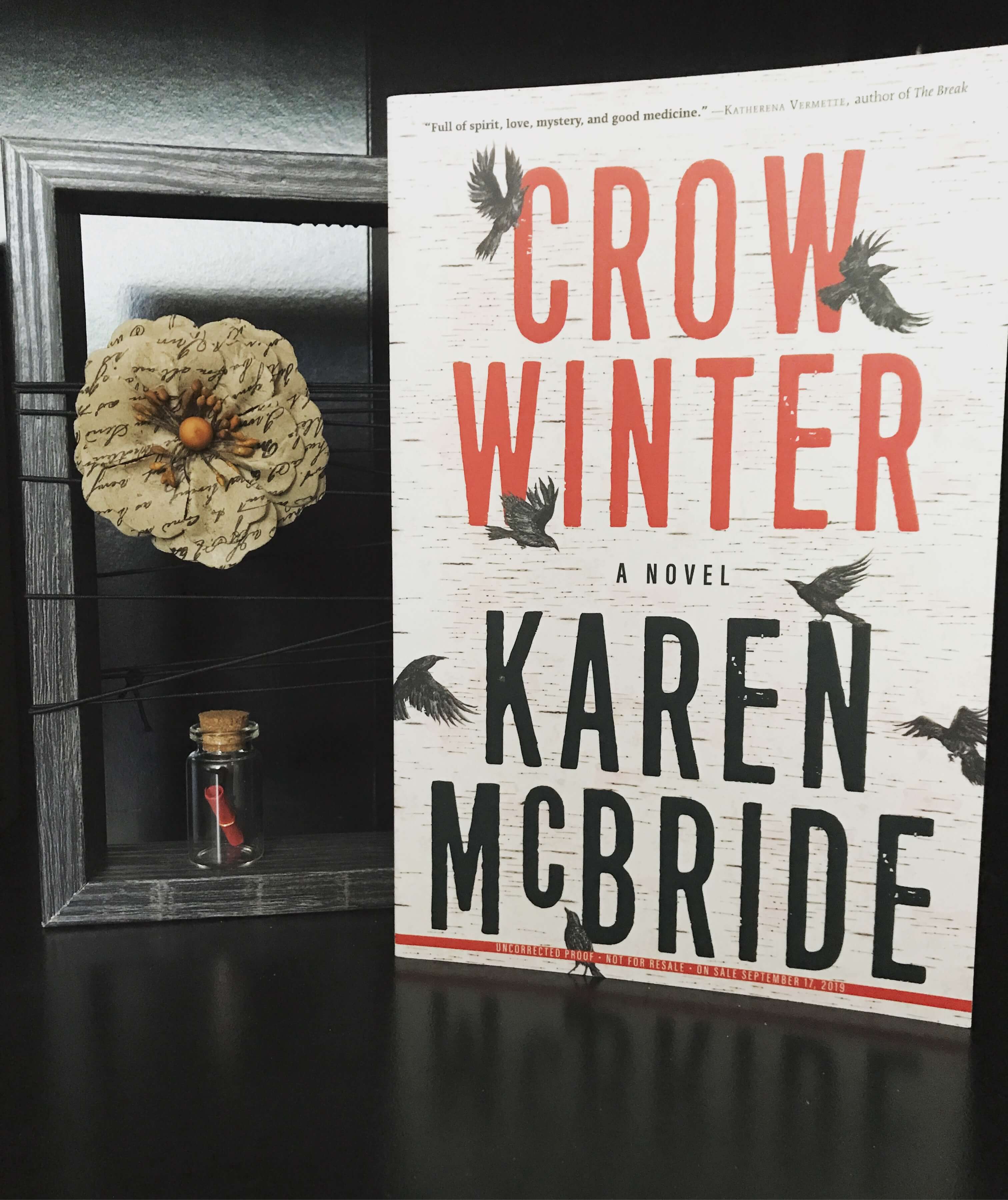
Minwa pijawok! Crow Winter by Karen McBride is an amazing story of loss, preservation, of growing and being open to new things, because even the strangest and un-realest of things have something to teach us. I shared my thoughts about it here and I’m thrilled to share my chat with Karen about the book, her future projects and more.
Since I am still learning about First Nation cultures, Karen was also able to give me a quick primer about them:

There are many nations that make up the Indigenous people that are on the land now called “Canada.” Typically, those Indigenous Peoples identify themselves as either First Nations, Inuit, or Métis. Algonquin people fall under that first category (so do other nations such as Cree, Ojibway, Haida, Blackfoot, Mohawk, etc.) .
Karen is Algonquin Anishnaabe from the Timiskaming First Nation in the territory that is now Quebec. She is passionate about writing, drawing and storytelling. She added a number of illustrations to Crow Winter. You can find these beautiful drawings here. It was wonderful to connect with her! Enjoy the interview, and get some insights about the book, without any spoilers, and more! 🙂
- Where did the inspiration for Crow Winter come from? Have you met Nanabush yourself?
Crow Winter came about as a way for me to get my own grief written down. I lost my own father to lung disease in 2013 and needed a way to grieve and to heal. Writing about it seemed like the perfect fit, since I’d always been passionate about creating and storytelling. But it wasn’t until I was in school for my MA in English in the field of Creative Writing at the University of Toronto that I actually started to work on the manuscript that would become Crow Winter. The story was always inside of me, it just needed a little more time to come out.
And I can’t say that I’ve ever truly met Nanabush, but I see crows absolutely everywhere now and I make sure to say ‘hello’ in case one of them turns out to be the trickster.
- Are there other demi-Gods in the Algonquin culture? How are they different from Nanabush?
Nanabush is more of a Spirit Being rather than a demi-god. He’s one of the protagonists of our oldest stories and someone who tends to pop up quite often (sometimes even when he isn’t wanted – but that’s a trickster’s way). Since I’m still learning and reconnecting with my culture and my stories, I can’t say if there are more beings exactly like him, but there are heroes and creators that live in all of our stories. The kind that build worlds and mess them up, but also who help and heal.
- I was discussing with my partner after reading your book how the Western society almost has no-culture of itself because it is such an amalgamation of different beliefs. This is why reading Crow Winter and learning about First Nations and the strong bonds between the people and nature is such a refresher from everyday life! What are some little habits that people who are not First Nations can incorporate in their lives to develop a sense of community and belonging? What can we learn from your culture?
I’d say it’s more that Western society has many micro-cultures within it. Each group of people have beliefs that they adhere to and sometimes those beliefs change and morph depending on things as simple as what neighbourhood they live in in a city.
I think it’s important to note that Crow Winter showcases just one (albeit fictional) First Nation’s relation to the land and to community. This relationship is one that I based on my own home reserve because it’s what I grew up with. I can’t speak for all people across the country, but I think our cultural tradition as First Nations people has always been one of respect. That same respect is woven into how we treat our family and friends, our community members, and also the land and all beings of creation. But that’s not the reality for all Indigenous People living in Canada. Many are urban Indigenous and live in cities across the country, so their bond to nature might be different than someone who only ever lived on the reserve. Everyone’s different and we all practice our culture in our own unique way.
So I guess what non-Indigenous people can learn from our culture is to carry respect with you every day and into each aspect of your life.
- Can you tell me more about the Medicine Wheel and the significance it has in the Algonquin and First Nations culture?
The Medicine Wheel represents the four colours of people, the four directions, the four medicines, and the four stages of life. It’s a hoop, so that means these things move in cycles and are endless. In the book, I play with its symbolism and make it into a part of the earth itself. For the most part, the Wheel is a reminder to all of us that we’re all connected and that our differences do not outweigh the ties that bind us together.
- I loved reading about the Seven Grandfather teachings. How do First Nations incorporate them in their lives?
For Anishnaabeg, the Grandfathers are ways of living. They are teachings that show us how to be kind, caring, and good people. They’re all a part of something we call Mino Bimaadiziwin or “The Good Life.” If you live your everyday life with each of the Grandfathers in mind, then you will easily live a good life.
I don’t think there’s one correct way to incorporate them into our lives. It’s much more subjective and personal. We are all lucky that we have so many choices in this world, so it’s important that we do what is right for us and above all, that we choose to be kind.
- Do you have a second novel in the works?
I do! But I’m keeping it a secret for now. You’ll just have to wait and see!
- When did you recognize your passion for writing and illustrations? What would you tell your younger self when it comes to the artistic pursuits of writing and drawing?
Hmm… honestly, I think I’ve been doing both of those things for as long as I can remember. Growing up on the Rez meant there wasn’t always stuff to do, so my friends and I played pretend a lot. Our backyards were all kinds of places, from Hogwarts to Middle-earth to a post-apocalyptic wasteland. So you can imagine we were all pretty creative kids. All of that pretend-playing eventually led to drawing characters and writing stories.
However, I don’t think I realized how fun it was to create my own worlds and stories until I was in grade 7 or 8. I wrote my first novel-length piece when I was 12 and from there I became obsessed with the thrill of writing. On the other hand, drawing was always something I enjoyed doing to relax and unwind. I’ve only ever taken one art class in high school, so if I’m any good now it’s definitely from years and years of self-taught practice!
For advice, I think I’d tell myself to never stop creating. Write and draw whatever you want and do not be ashamed of it. There are no rules when it comes to creating something you love. Be bold and fearless and just go for it!

Being open to new experiences is one of the messages from Crow Winter. By conversing with Karen, she corrected some of ideas that I had, for example, Nanabush is not really a demi-god; he is actually a Spirit Being. By connecting with authors, discussing their books and sharing my own thoughts about what I learn from them, I’m practicing keeping an open mind, and I’m grateful to be supported by authors like her who have given me the chance to get to know them.

** Crow Winter is now out in stores so get a copy and let me know what you think! **
Amazon Print
Amazon Kindle
You can find my thoughts on the book here. You can also connect with Karen using the links below:
Cover image: Photo by Andrew Neel on Unsplash

Be First to Comment